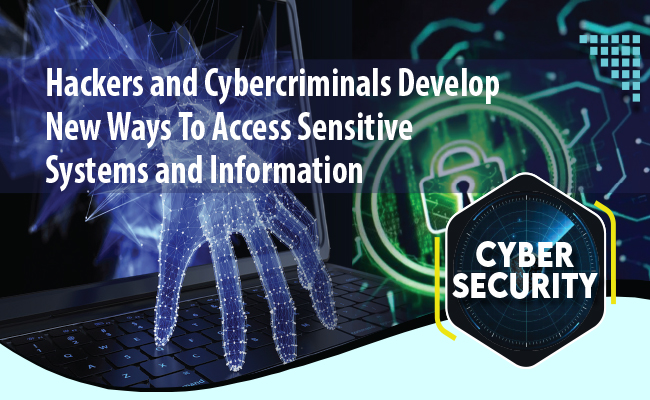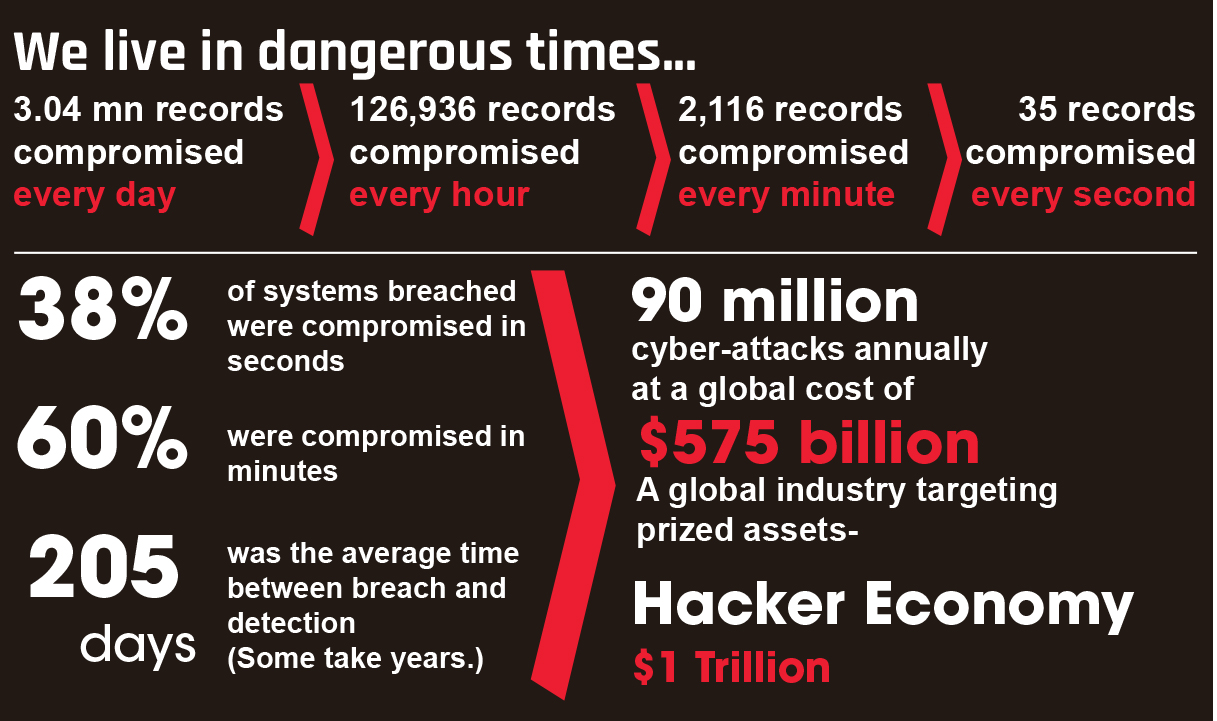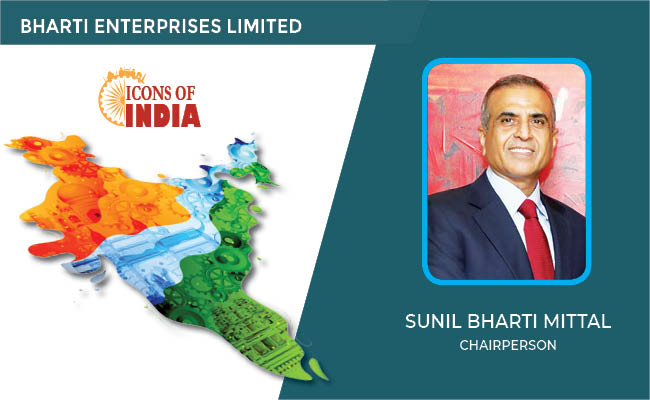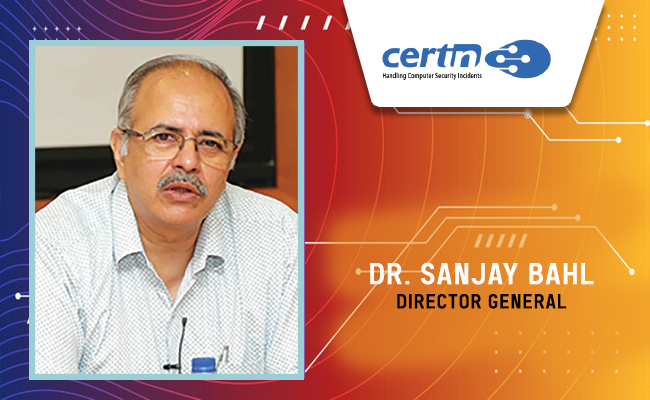Hackers and Cybercriminals Develop New Ways To Access Sensitive Systems and Information
By MYBRANDBOOK

Today, cybersecurity and data security are crucial because they safeguard personal and professional information. As data is shared internally and externally, insider threats like data theft are also a serious concern. To protect data, we must adhere to security policies, procedures, and legal requirements.
With the increasing use of technology in our daily lives, cybersecurity has become more critical than ever before. In the digital transformation era, the growing reliance on technology and the increasing interconnectedness of devices and systems has brought about new cybersecurity risks and challenges.
As organizations across industries embrace digital technologies to drive innovation, efficiency, and growth, cybercriminals are also ramping up their efforts to exploit vulnerabilities in these systems. Ransomware, data leaks, phishing, and malware attacks are some of the cybersecurity challenges facing Indian businesses. Cloud-native platforms, AI, ML and Quantum Computing (QC) are some of the emerging technologies that are gaining traction in the market.
Cybersecurity is a complex and ever-evolving field. There is no silver bullet that will completely protect us from cyberattacks. However, by investing in cybersecurity and being aware of the risks, we can reduce our vulnerability to these attacks.
Cybersecurity has become a critical concern for businesses, governments, and individuals alike. The consequences of a cyber attack can be devastating, ranging from financial loss and reputational damage to intellectual property theft and even physical harm in some cases. The rise of cloud computing, AL & ML, mobile devices, and the Internet of Things (IoT) has further expanded the attack surface, making it more challenging to secure digital assets and data.
The digital era has dawned in India, with businesses adopting new technologies and shifting to new ways of working. This has undoubtedly attracted bad actors to strategize unique methods to attack them. According to a report by CERT-In, India reported 13.91 lakh cybersecurity incidents last year, indicating a growing number of cyberattacks.
According to the report, the demand-supply gap stood at 30%, projecting a major skill challenge in the industry. The research study also reveals that global weekly cyber-attacks have increased by 7% to surpass 1,200 attacks per week, while Indian organisations experienced over 2,000 weekly attacks in Q1 2023, marking an 18% increase compared to the previous year.
The cybersecurity market in India is expected to grow at a CAGR of 13.37% from 2022 to 2027, reaching USD 317.02 billion by 2027, as businesses mitigate and combat these risks by adopting emerging technologies such as AI/ML, distributed cloud, and 5G.These technologies can analyze vast amounts of data and identify patterns that are not easily detectable by humans, which businesses are using to develop security solutions to prevent, detect and respond to cyberattacks in real-time.
As a result, the importance of cybersecurity has grown exponentially in recent years. Organizations must now invest in robust cybersecurity measures to safeguard their networks, systems, and data from potential threats. This includes implementing access controls, firewalls, encryption, and other security technologies to prevent unauthorized access, detecting and responding to threats in real-time, and conducting regular security assessments to identify vulnerabilities and strengthen defences.
Evolving cybersecurity industry in India
Over the last decade, Internet penetration in India has gained massive momentum. We have more than 700 million smartphone users and Indians are more digitally savvy than ever before. The Fintech industry is one of the fastest-growing sectors and overall tech startups are on the rise.
Although people consider Cybersecurity to be a niche sector in India or globally for that matter, It is exponentially developing into one of the most integral, vast, and necessary security solutions paving the way for a more secure and dependable future in all things online.

Biggest challenges for Indian businesses
Indian businesses are undergoing a huge transformation. However, they do face various challenges when it comes to cybersecurity. Indian businesses are facing constant threats of data theft. Most of them lack the skilled personnel and adequate resources to defend against cyberattacks as we have always moved on a traditional path and such innovative technologies are a new trend in the industry. To address such issues, Enterprises need to have a good budget, which has been a serious concern and a barrier to addressing cyber security issues. Because of these low investments, businesses are easy targets for cybercriminals and malware. Due to the advanced increment in the tech-centric modus operandi in businesses, they are working on huge databases that are susceptible to cyber threats as they are stored on large servers.
Secondly, Given the digitalisation explosion & dynamic nature of the cyber world, Indian businesses face a variety of cybersecurity-related challenges. Insufficient SOC resources to tackle cyber threats, a lack of awareness, increasing sophistication of cyberattacks, and potential threats like phishing, malwares are the primary concerns. Organizations that are dealing with the targeted and sophisticated threats today can enhance their security posture by adopting the XDR framework. A living security platform enables an XDR ecosystem to learn and adapt to the evolving threat landscape, keeping them always safe from potential breaches.
Potential risks associated with the increasing adoption of emerging technologies
Emerging tech is a space that provides exceptional new-age technologies and helps in the upskilling of Indian businesses and industries, be it in terms of volume, data storage, cloud transformation or easy accessibility through different servers and granting safety to the data. The technology and open source of the networks that one works on further increase the threat to data in different forms like ransomware, malware, data theft, etc. Around 77 percent of Indian business executives share that cybercriminal activity is the biggest organizational threat and 62 percent view insider threat as a major challenge.
Secondly, ChatGPT is a potent language model that has been a most talked topic of discussion recently. While it can help strengthen cybersecurity by creating code, procedures, guided investigations, and plans that can aid in countering such threats, it can also be misused to create malicious codes like evasive malwares, ransomware, or phishing emails campaigns. ChatGPT AI engines can potentially be leveraged by threat actors to create complex threats that can have massive reach and impact.

India improving its cybersecurity readiness
India’s cybersecurity landscape has evolved rapidly keeping up with digitalisation and cloud adoption initiatives. Today, there is already a growing demand from private and public sector organizations alike for a comprehensive security strategy and for security platforms to advance at the same rate as cyber threats. At the same time, businesses must invest in cutting-edge security technologies powered by AI and ML to help identify threats in real time. There must be a body to monitor the cybersecurity movement. Indian businesses need to create cloud infrastructure like the hybrid multicloud for storing huge databases to protect the data from all the malware and spam.
According to Check Point Threat Intelligence Report, an organization in India is attacked an average of 1787 times per week in the last 6 months, compared to 983 attacks per organization globally,as the world experiences the 5th generation of cyberattacks large-scale, multi-vector, mega attacks targeting businesses, individuals, and countries.
A survey gauged the priorities, difficulties and progress of their implementations of new cyber defense technologies such as cloud cybersecurity modernization, endpoint detection and response and extended detection and response (EDR-XDR), multifactor authentication (MFA) and zero trust architecture (ZTA).
One of the biggest challenges that Indian businesses are facing is data overload. The migration to cloud and accelerated digital transformation, especially after the pandemic has led to data proliferation. As a result, cloud security monitoring has become difficult and basic security controls have become redundant as sophisticated attacks are increasing. In a cloud-based environment, where there are innumerable endpoints and users, there are concerns regarding data loss and data leakage, data privacy, lack of visibility of who can access the data, vulnerabilities in cloud based applications, compliance requirements, account hijacking, etc.
While cybersecurity is vital for all industries, there is a maximum scope of growth in sectors that have witnessed rapid transformation on the back of digital disruption. Fast-growing sectors such as BFSI, education and healthcare must have robust cybersecurity systems to secure their data and operations.
Cyber Crime Emergency Response Team (CERT) is India’s 1st crime investigation agency who look after for cybercrime related cases, digital evidence collection, create new investigation method to solve organized crime, solve high profile crime cases.
Cyber CERT is providing support to government officials, agencies, investigation firms.

Cybersecurity Statistics
Cybersecurity spending is estimated to exceed $188 billion in 2023.
There will be nearly 3.5 million open cybersecurity jobs waiting to be filled in 2023.
65% of board members felt that their organization was at risk of a cyberattack.
Nearly 70% of organizations reported a labor shortage for their security team.
94% of security teams and 93% of development teams report being impacted by talent shortages.
69% of MSPs report their clients struggle with compliance.
Google and Microsoft pledge to invest more than $60 billion over a five-year period to improve cybersecurity systems.
The global automotive cybersecurity market is estimated to grow to $9.7 billion by 2023.
44% of surveyed respondents note that they do not provide cybersecurity training to their staff regarding threats of remote work.
80% of organizations surveyed have adopted Zero Trust or are in the process of adopting it.
Top Security Threats in 2023
The biggest challenge would be the rise in phishing attacks. What we are seeing in the last few years is cyber criminals are using new techniques, new ways of sending phishing mails, especially CXO and CFO level scams. Secondly, many organizations have either started or completed their journey to the Cloud. Now these hackers are targeting the sensitive data that is stored on the Cloud. So the security of the Cloud has become even more important. Thirdly, with most of the organizations now working in a hybrid mode, so endpoint security systems are getting hacked very easily by hackers as they can get access to company networks.
Raising the protection level of the organization
Information security cannot be a blockade in business growth. The information security system department has to become a business enabler and there is a very thin line. We have to tell the management what are the security risks and look to mitigating these risks without compromising on the business growth.
The most important part is the Top-down approach. Right from the top management to the employees, everyone should be made aware that information security is everyone’s responsibility, and not just the responsibility of the CISO. This is one approach that would benefit the organization as a whole.”
Cybersecurity attacks are still alive and will in 2023. In fact, they are becoming more sophisticated and targeted than ever before. This is due to a number of factors, including the increasing use of technology in our everyday lives, the growing sophistication of cybercriminals, and the increasing value of data.
According to Verizon’s recently released 2023 Data Breach Investigations Report, there were 5,199 data breaches in the past year, with social engineering attacks almost doubling and ransomware holding statistically steady at 24%. The report also indicated that 83% of data breaches involved external actors, with Verizon claiming the motivation for their attacks remains largely financial.
Cybersecurity professionals and organizations invest significant resources to defend against these threats, employing proactive measures like firewalls, intrusion detection systems, encryption, secure coding practices, and employee training on cybersecurity best practices. However, cyber attackers adapt to these defenses, employing sophisticated techniques and constantly searching for vulnerabilities to exploit.
Going forward, Electric vehicle chargers are the next target for job creation in India. The Indian government has set a goal of installing 500,000 electric vehicle chargers by 2030, and this will require a significant investment in human capital.
Last year, global sales for electric vehicles increased by 60% worldwide and one in every seven passenger cars purchased globally was an EV. In contrast, just five years earlier, only one in every 70 cars bought was an electric vehicle. In India, EV sales hit 1.17 million units in FY2023 which reflects the adoption fervour. Consumer demand for EVs is at an all-time high, but the growth of this sector may mean unprecedented security challenges. Experts predict that the EV Chargers pose an unprecedented risk.
“EVSE [Electric Vehicle Supply Equipment] is supported by electronics, both for charging the vehicle and facilitating communications, so EVSE is susceptible to cyber security vulnerabilities and attacks. EVSE also ties together two critical sectors-transportation and energy (specifically, the grid)-that have never been connected electronically before. This creates the potential for attacks that could have significant impacts in terms of money, business disruptions and human safety.”

Cyber attacks in India continue to grow
India faced a 290% increase in the number of attacks when compared to the previous period. We expect the sophistication of such cyberattacks to grow significantly. With an overall deterioration of security in this cyberspace, the 290% growth in cyberattacks only seems trivial when compared to the growing and a looming threat India is yet to face.
India needs a safe internet that can be used by all sections of society, irrespective of age. The Digital India Bill seeks to modernise outdated laws, promote digital inclusivity, and ensure a secure online experience for India’s rapidly growing internet user base.
The technology intensity of our economy is proliferating, and the innovation ecosystem is growing. But the law that regulates this sector is 22 years old.
Artificial intelligence is rapidly becoming a key component of cybersecurity. AI is the most disruptive technologies of our time. AI can be used to automate tasks, identify threats, and respond to incidents more quickly and effectively than humans can.
Cyberattacks are on the rise across sectors and the attacks have become more sophisticated. Recently, healthcare organizations have increasingly being targeted.
AI is still a relatively new technology in cybersecurity, but it has the potential to revolutionize the field. By automating tasks and improving threat detection and response, AI can help organizations to protect themselves from increasingly sophisticated attacks.
AI can analyze vast amounts of data and identify patterns, anomalies, and indicators of potential cyber threats. Machine learning algorithms can continuously learn from new data and adapt their detection capabilities, enabling faster and more accurate identification of potential security breaches.
It’s time for the Govt organizations to wake up that they are the custodians of public information. Security is their prime responsibility. A Legal Obligation for Government, Public Sector Organizations, and Corporates
Additionally, India is a favourable environment for cybercriminals given the combination of minimal public awareness of cybersecurity issues as well as vulnerabilities in India’s cybersecurity infrastructure.
India’s consumers, businesses, and policymakers are not well-versed in cybersecurity, which makes them easy targets for cybercriminals, especially when there are few cybersecurity mechanisms in place to safeguard internet users.
Going forward, AI has the potential to significantly reduce the cost of cybersecurity by automating tasks, improving accuracy, and providing insights.
However, it is important to note that AI is a complex technology and can be difficult to implement and manage. Organizations should carefully consider the benefits and challenges of AI before making a decision about whether to implement it.
| The Top 30 Cybersecurity Companies In India | ||
| ACRONIS | IBM | SENTINELONE |
| BROADCOM | INFOBLOX | SNOWFLAKE |
| CHECK POINT | JUNIPER | SONICWALL |
| CISCO | KASPERSKY | SOPHOS |
| CROWDSTRIKE | KEYSIGHT | TENABLE |
| ETEK | MANDIANT | THALES |
| FIREEYE | MICROSOFT | TRELLIX |
| FORCEPOINT | NORTON | TREND MICRO |
| FORESCOUT | PALO ALTO | VARONIS |
| FORTINET | RSA | ZSCALER |
| *as per the survey report of VARINDIA | ||


Legal Battle Over IT Act Intensifies Amid Musk’s India Plans
The outcome of the legal dispute between X Corp and the Indian government c...

Wipro inks 10-year deal with Phoenix Group's ReAssure UK worth
The agreement, executed through Wipro and its 100% subsidiary,...

Centre announces that DPDP Rules nearing Finalisation by April
The government seeks to refine the rules for robust data protection, ensuri...

Home Ministry cracks down on PoS agents in digital arrest scam
Digital arrest scams are a growing cybercrime where victims are coerced or ...


Icons Of India : ALOK OHRIE
Alok Ohrie leads Dell Technologies’ India business, overseeing Sales...

ICONS OF INDIA : SUNIL BHARTI MITTAL
Sunil Bharti Mittal is the Founder and Chairman of Bharti Enterprises,...

ICONS OF INDIA : RISHAD PREMJI
Rishad Premji is Executive Chairman of Wipro Limited, a $11.3 billion ...


IOCL - Indian Oil Corporation Ltd.
IOCL is India’s largest oil refining and marketing company ...

IREDA - Indian Renewable Energy Development Agency Limited
IREDA is a specialized financial institution in India that facilitates...

CERT-IN - Indian Computer Emergency Response Team
CERT-In is a national nodal agency for responding to computer security...


Indian Tech Talent Excelling The Tech World - NEAL MOHAN, CEO - Youtube
Neal Mohan, the CEO of YouTube, has a bold vision for the platform’s...

Indian Tech Talent Excelling The Tech World - PADMASREE WARRIOR, Founder, President & CEO - Fable
Padmasree Warrior, the Founder, President, and CEO of Fable, is revolu...

Indian Tech Talent Excelling The Tech World - Soni Jiandani, Co-Founder- Pensando Systems
Soni Jiandani, Co-Founder of Pensando Systems, is a tech visionary ren...
 of images belongs to the respective copyright holders
of images belongs to the respective copyright holders